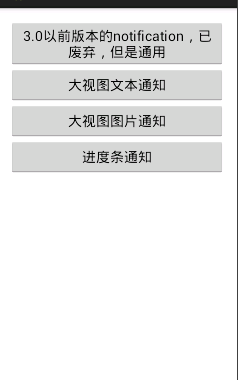編輯:Android開發實例
在 Android 中,多數情況下每個程序都是在各自獨立的 Linux 進程中運行的。當一個程序或其某些部分被請求時,它的進程就“出生”了;當這個程序沒有必要再運行下去且系統需要回收這個進程的內存用於其他程序時,這個 進程就“死亡”了。可以看出,Android 程序的生命周期是由系統控制而非程序自身直接控制。這和我們編寫桌面應用程序時的思維有一些不同,一個桌面應用程序的進程也是在其他進程或用戶請求時被創 建,但是往往是在程序自身收到關閉請求後執行一個特定的動作(比如從 main 函數中 return)而導致進程結束的。要想做好某種類型的程序或者某種平台下的程序的開發,最關鍵的就是要弄清楚這種類型的程序或整個平台下的程序的一般工作 模式並熟記在心。在 Android 中,程序的生命周期控制就是屬於這個范疇——我的個人理解:)
在 Android 系統中,當某個 activity調用 startActivity(myIntent) 時,系統會在所有已經安裝的程序中尋找其 intent filter 和 myIntent 最匹配的一個 activity,啟動這個進程,並把這個 intent 通知給這個 activity。這就是一個程序的“生”。比如我們在 Home application 中選擇 “Web browser”,系統會根據這個 intent 找到並啟動 Web browser 程序,顯示 Web browser 的一個 activity 供我們浏覽網頁(這個啟動過程有點類似我們在在個人電腦上雙擊桌面上的一個圖標,啟動某個應用程序)。在 Android 中,所有的應用程序“生來就是平等的”,所以不光 Android 的核心程序甚至第三方程序也可以發出一個 intent 來啟動另外一個程序中的一個 activity。Android 的這種設計非常有利於“程序部件”的重用。
一個 Android 程序的進程是何時被系統結束的呢?通俗地說,一個即將被系統關閉的程序是系統在內存不足(low memory)時,根據“重要性層次”選出來的“犧牲品”。一個進程的重要性是根據其中運行的部件和部件的狀態決定的。各種進程按照重要性從高到低排列如 下:
1. 前台進程。這樣的進程擁有一個在屏幕上顯示並和用戶交互的 activity 或者它的一個IntentReciver 正在運行。這樣的程序重要性最高,只有在系統內存非常低,萬不得已時才會被結束。
2. 可見進程。在屏幕上顯示,但是不在前台的程序。比如一個前台進程以對話框的形式顯示在該進程前面。這樣的進程也很重要,它們只有在系統沒有足夠內存運行所有前台進程時,才會被結束。
3. 服務進程。這樣的進程在後台持續運行,比如後台音樂播放、後台數據上傳下載等。這樣的進程對用戶來說一般很有用,所以只有當系統沒有足夠內存來維持所有的前台和可見進程時,才會被結束。
4. 後台進程。這樣的程序擁有一個用戶不可見的 activity。這樣的程序在系統內存不足時,按照 LRU 的順序被結束。
5. 空進程。這樣的進程不包含任何活動的程序部件。系統可能隨時關閉這類進程。
從某種意義上講,垃圾收集機制把程序員從“內存管理噩夢”中解放出來,而 Android 的進程生命周期管理機制把用戶從“任務管理噩夢”中解放出來。我見過一些 Nokia S60 用戶和 Windows Mobile 用戶要麼因為長期不關閉多余的應用程序而導致系統變慢,要麼因為不時查看應用程序列表而影響使用體驗。Android 使用 Java 作為應用程序 API,並且結合其獨特的生命周期管理機制同時為開發者和使用者提供最大程度的便利。
可以調用finish()結束處理Paused或者stopped狀態的Activity。
void onCreate(Bundle savedInstanceState)void onStart()void onRestart()void onResume()void onPause()void onStop()void onDestroy()
onCreate()onDestroy()The visible lifetime of an activity happens between a call toonStart()onStop()
The foreground lifetime of an activity happens between a call to onResume()onPause()
To capture that state before the activity is killed, you can implement an onSaveInstanceState()onPause() is called. It passes the method a Bundle object where you can record the dynamic state of the activity as name-value pairs. When the activity is again started, the Bundle is passed both to onCreate() and to a method that's called after onStart(),onRestoreInstanceState()
Unlike onPause() and the other methods discussed earlier, onSaveInstanceState() and onRestoreInstanceState()are not lifecycle methods. They are not always called. Because onSaveInstanceState() is not always called, you should use it only to record the transient state of the activity, not to store persistent data. Use onPause() for that purpose instead.
onPause() method is called. onCreate(), onStart(), and onResume() methods are called in sequence. onStop() method is called.
A service can be used in two ways:
Context.startService()Context.stopService()Service.stopSelf()Service.stopSelfResult()stopService() call is needed to stop the service, no matter how many times startService() was called. It can be operated programmatically using an interface that it defines and exports. Clients establish a connection to the Service object and use that connection to call into the service. The connection is established by callingContext.bindService()Context.unbindService()bindService() can optionally launch it.
相關的方法:
void onCreate()void onStart(Intent intent)void onDestroy()
The onCreate() and onDestroy() methods are called for all services, whether they're started byContext.startService()Context.bindService()onStart() is called only for services started bystartService().
If a service permits others to bind to it, there are additional callback methods for it to implement:
IBinder onBind(Intent intent)boolean onUnbind(Intent intent)void onRebind(Intent intent)
只有一個方法:void onReceive(Context curContext, Intent broadcastMsg)
A process with an active broadcast receiver is protected from being killed. But a process with only inactive components can be killed by the system at any time, when the memory it consumes is needed by other processes.
This presents a problem when the response to a broadcast message is time consuming and, therefore, something that should be done in a separate thread, away from the main thread where other components of the user interface run. IfonReceive() spawns the thread and then returns, the entire process, including the new thread, is judged to be inactive (unless other application components are active in the process), putting it in jeopardy of being killed. The solution to this problem is for onReceive() to start a service and let the service do the job, so the system knows that there is still active work being done in the process.
Android根據其重要性在內存不足的時候移去重要性最低的進程。重要性由高到低為:
注意:Because a process running a service is ranked higher than one with background activities, an activity that initiates a long-running operation might do well to start a service for that operation, rather than simply spawn a thread — particularly if the operation will likely outlast the activity. 比如播放MP3的時候就要啟動一個service。
 Android編程之SMS讀取短信並保存到SQLite的方法
Android編程之SMS讀取短信並保存到SQLite的方法
本文實例講述了Android編程之SMS讀取短信並保存到SQLite的方法。分享給大家供大家參考,具體如下: Android 之 SMS 短信在Android系統
 Android編程中TextView寬度過大導致Drawable無法居中問題解決方法
Android編程中TextView寬度過大導致Drawable無法居中問題解決方法
本文實例講述了Android編程中TextView寬度過大導致Drawable無法居中問題解決方法。分享給大家供大家參考,具體如下: 在做項目的時候,很多時候我們
 Android中通過Notification&NotificationManager實現消息通知
Android中通過Notification&NotificationManager實現消息通知
notification是一種讓你的應用程序在沒有開啟情況下或在後台運行警示用戶。它是看不見的程序組件(Broadcast Receiver,Service和不活
 Android本地化
Android本地化
Android應用程序可以在許多不同地區的許多設備上運行。為了使應用程序更具交互性,應用程序應該處理以適合應用程序將要使用的語言環境方面的文字,數字,文件等。在本章中,我